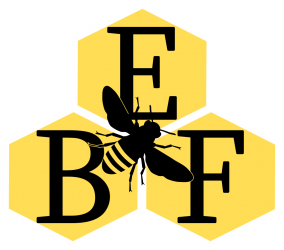Winter is coming, and like the Starks and people of the north (for all you Game of Throne fans), the bees have known this for quite a while. But now it is time for the beekeepers (and Lannisters) to prepare as well. First off, we needed to evaluate the health of each hive. We looked to be sure that there was plenty of brood in the hives, and it looked like our queens were doing their jobs. There was a lot of brood, and any open cell had an egg in it. These will be the bees that will take the colony into the spring, so we’ve got to be sure there are plenty of new brood to survive the winter.
Next we looked at the honey stores. The top brood boxes were being packed with honey as the bees begin to prepare to store their winter food in the top and move the brood rearing to the bottom.
We looked for any diseases like foulbrood, chalkbrood, or American foulbrood. We found nothing there. Given the finding of American foulbrood at a nearby apiary, we were very pleased to see everyone looking healthy.
Possibly most important, we needed to access the mite load of each hive. A high level of varroa mites can decimate a hive, and is a contributing (or perhaps main) cause of over-winter losses. To get a rough idea of the number of mites, we did a quick sugar roll test. A half cup of bees (~300) were placed in a jar with a tablespoon of powdered sugar. After shaking for a minute, the mites dislodge from the bees do to the sugar. The sugar and mites were shaken through the #8 mesh lid onto a white surface. We had a mite count that was a little on the high end – one hive had around 6 mites (2%), the other had 12 (4%). The actual mite count is likely to be higher since the number of mites in the brood is not accounted for in this test. The hive with 6 mites is on the low end of needing treatment, and the hive with 12 mites is definitely in need of treatment.
We’re not hippies, but we don’t want to add synthetic chemicals to our hives, as there is a tendency of these chemicals to permeate the wax and contaminate any future honey stored in that wax. We decided to treat with Apilife Var, which uses thymol (extracted from thyme) to kill the mites. It has little effect on the bees (though they don’t particularly like it in their hive), and it doesn’t leave any chemical residues in the wax. The treatment regimen is three weeks, and after that is completed we will perform another mite count to be sure the treatment was effective.
Finally, we needed to be absolutely certain the hive had enough food for winter. They bees have been hard at work collecting nectar from goldenrod, asters, and jewelweed, but to ensure they have enough food stored for winter we supplemented their food with sugar water. We will continue to monitor their food storage, and later in the month we will weigh the hives to be sure they have the 80 pounds or so of food they will require to make it over the winter.
Winter is coming.

